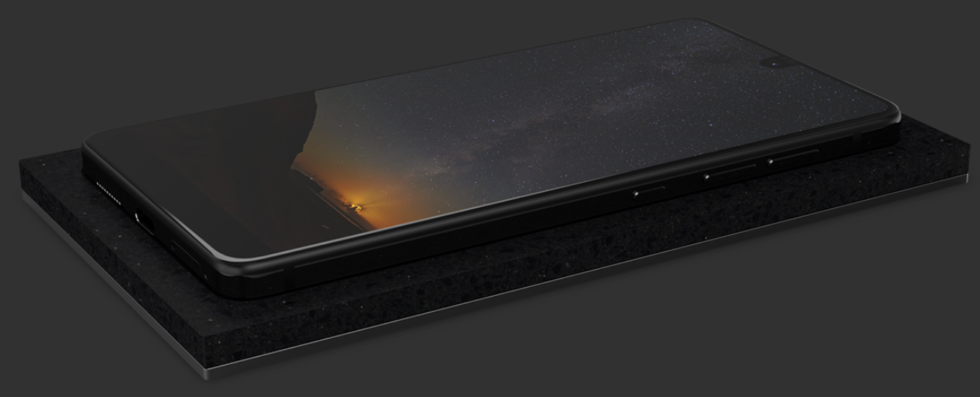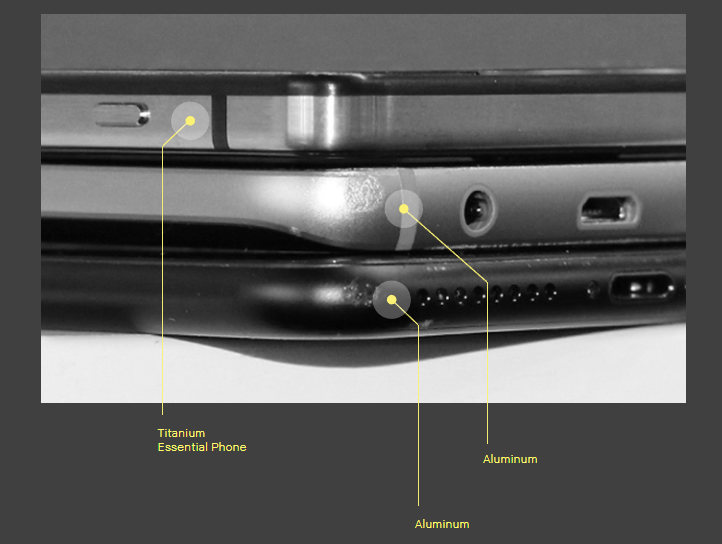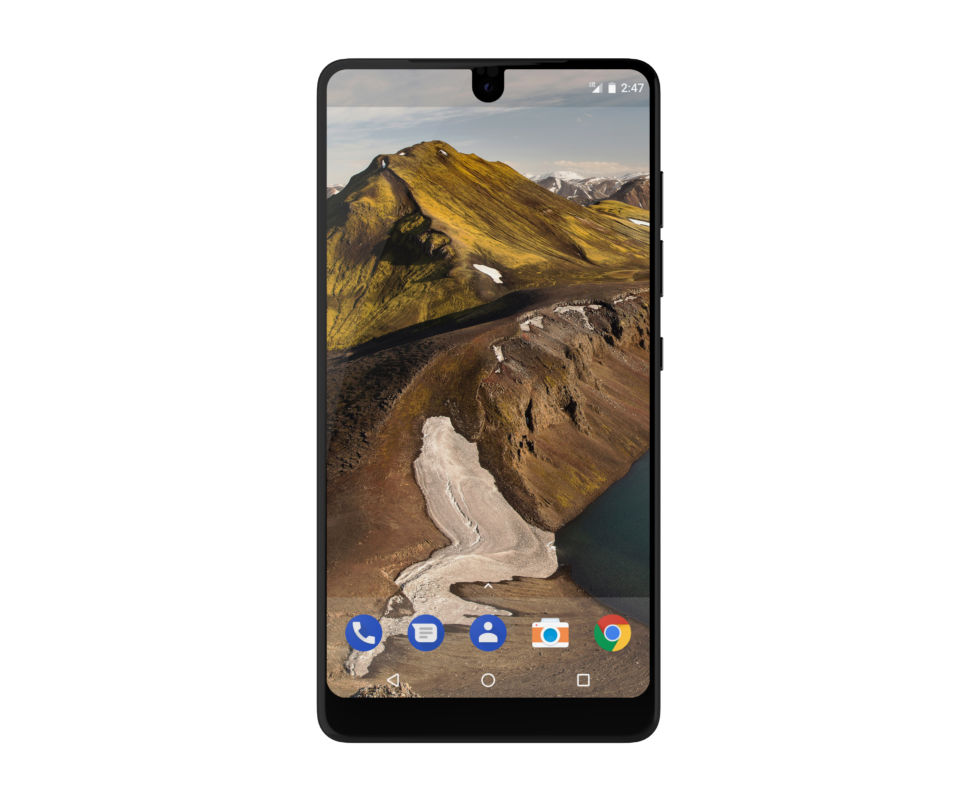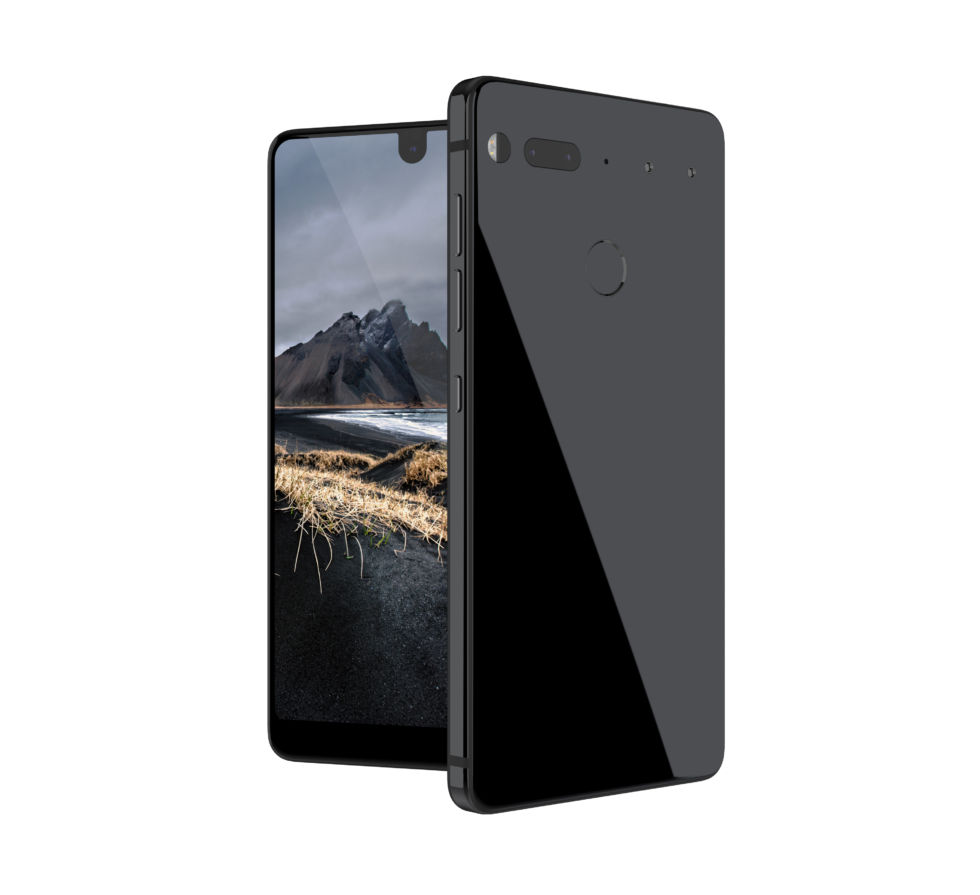Xiaomi review, The father of Android builds a smartphone

2017 is the year of the slim-bezel smartphone, and the latest to enter the fray is Andy Rubin's "Essential" smartphone startup. Today the company announced the "Essential Phone," a flagship Snapdragon 835 device headed to the US for $699.
You certainly can't accuse the Essential Phone of being boring. It has possibly the strangest implementation of a front-facing camera we've ever seen; the device is made of ceramic and titanium; there's a magnetic modular connector on the back; and there isn't a single logo on the entire device.
Let's start with the basics: Andy Rubin, the founder of Android, is of course launching an Android phone with 7.1.1, the latest version. The device has a 2.45GHz Snapdragon 835 SoC with 4GB of RAM, 128GB of storage, and a 5.71-inch, 2560×1312 display (504 PPI) with an extra-tall 19:10 aspect ratio. The front camera is 8MP, while a dual 13MP sensor setup with laser autofocus is on the back. For power you've got a 3040mAh battery, a fast charging USB C port, and the modular connector. There's a rear fingerprint reader, but no headphone jack or SD card slot.
When you produce a phone design with razor-thin bezels, fitting all the typical components that come on the front of the device is a challenge. LG and Samsung have avoided front-component issues by keeping just enough top bezel to fit a front-facing camera and earpiece, while the Xiaomi Mi Mix employed a much more radical design, moving the front-facing camera to the bottom of the phone and using an internal earpiece. Essential takes the interesting route of having a razor-thin Mi Mix-style bezel, but keeps the front-facing camera in the usual spot by slicing a big U-shaped chunk out of the top center of the screen. That's right, there's a sizable chunk of dead space in the top center of the screen, just so the camera can stay at the top of the phone. It looks like there's also a pair of sensors just above the camera (probably auto-brightness and proximity), and the earpiece has managed to fit inside the top bezel, too.
Essential is trying to prevent the dead spot in the screen from affecting the software too much by using an extra-thick status bar. Essential's Android skin is required to provide a square area to apps, leading to a status bar that looks about twice as tall as normal. In portrait mode, the top center of the screen doesn't get used for much, but this could be a problem for games and videos, which typically use a landscape orientation. Presumably Essential is going to keep the status bar there to block an app from using that chunk of the screen. It's a bit of a bummer you can't use the whole screen, but at least the 19:10 aspect ratio means the phone should be able to do a 16:9 aspect ratio.
Like the LG G5 and Moto Z, the Essential Phone is also attempting to build a proprietary modular accessory ecosystem. On the back of the device is a pair of pogo pins with a magnetic attachment system, and if you're thinking "two pins doesn't sound like enough for data and power transfer" you're right! The pins apparently only provide power, while "wireless data transfer" fills in the rest of the blanks. The Moto Z ran power and data over a pogo pin connector, and it needed a whopping 24 pins to do it.
For launch, Essential has a single modular accessory: a 360-degree camera for an extra $50. The camera has dual 12MP sensors (or maybe 13MP sensors, the site has conflicting information) with a fish-eye lens, good for a 360-degree 3840×1920 video output. There are also four microphones and a "SuperSpeed USB" port for charging. Essential is also calling this "the world’s smallest 360° camera," which is helped by the fact that Essential doesn't have to include a battery. The LG G5 and Moto Z both failed with their respective modular ecosystem pushes. Buying a modular accessory for a phone is a huge tradeoff, because the accessory is so closely tied to the phone that you have to throw it out when you get a new phone. The module's integration with the phone has to be significant enough to overcome the proprietary downside, and neither LG or Motorola could produce something that felt worthwhile. The modules were all too niche, too expensive, too limited in use, and had poor performance versus a similarly priced standalone item. Essential is bringing a modular 360 camera to the party, but the only "advantages" in making it modular seems to be the lack of a battery and the slick mounting point. Will that be enough? The price is at least very low—most 360-degree cameras start at $150.
There's also a charging stand that uses the magnetic connector. It looks a lot like a wireless charging pad but plugs into the pogo pins. There's no word on price or availability for it.

Titanium is tougher than aluminum, but what about the ceramic back?
Essential
It's interesting that the phone company started by the father of Android doesn't seem too interested in talking about software. The website doesn't make any kind of promise about software updates, and there isn't even talk of software features. The single screenshot looks a lot like stock Android with a custom camera app and a large status bar.
There's no word on a release date. You can sign up to "reserve" the phone today for no money down, and Essential won't even take a credit card number.
Source: Ars Technica





Post a Comment